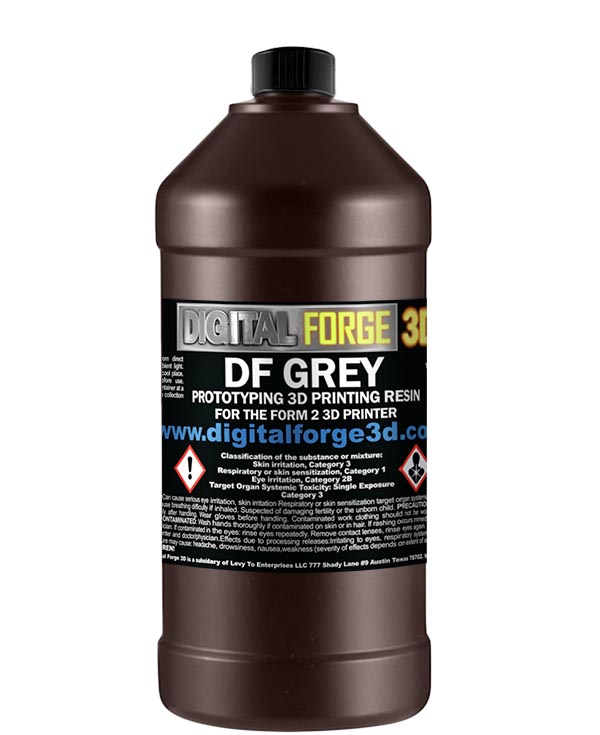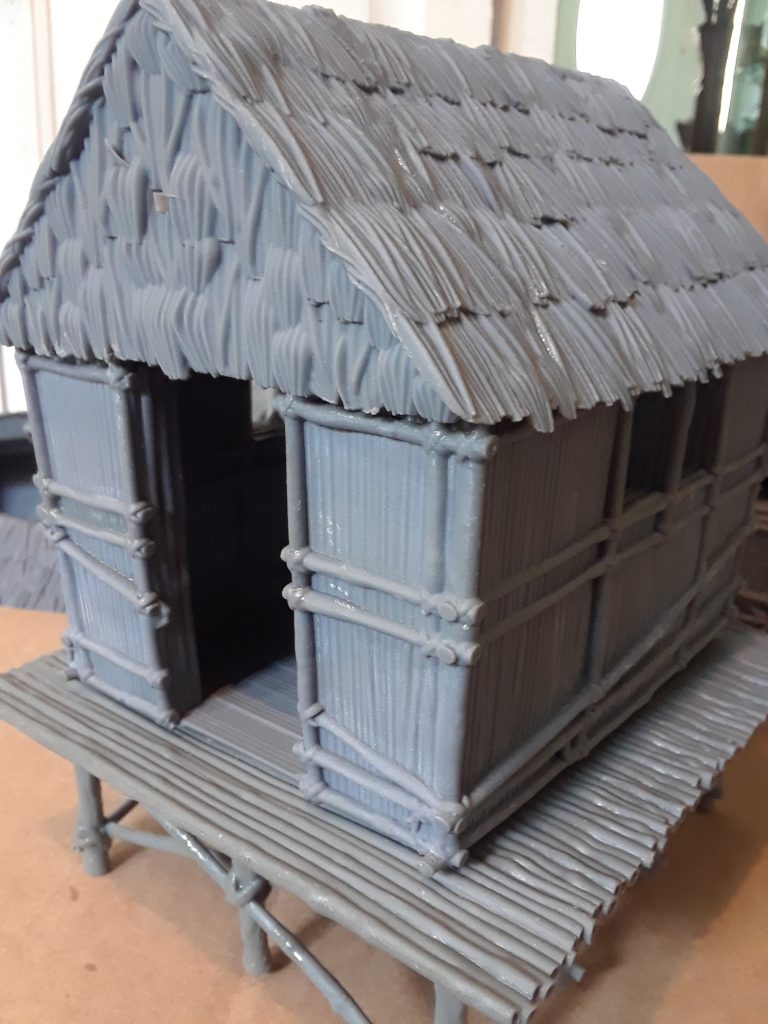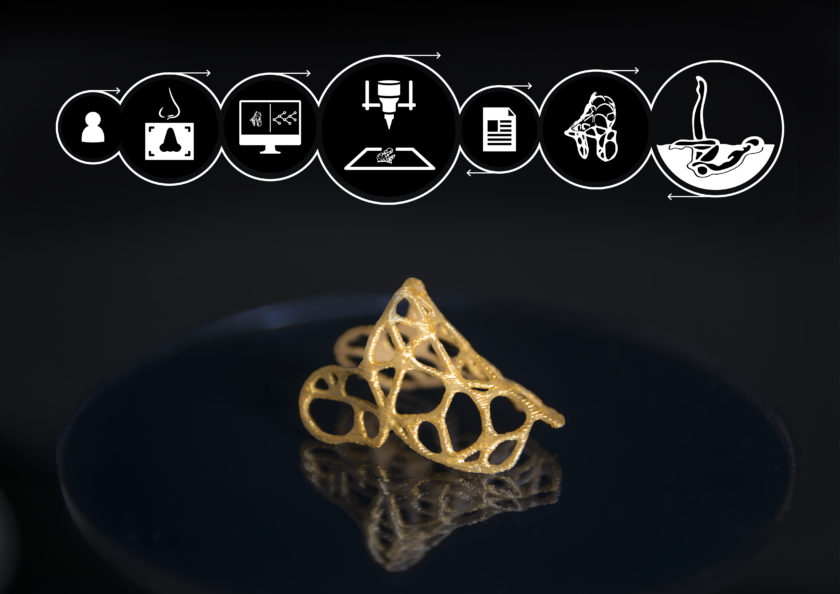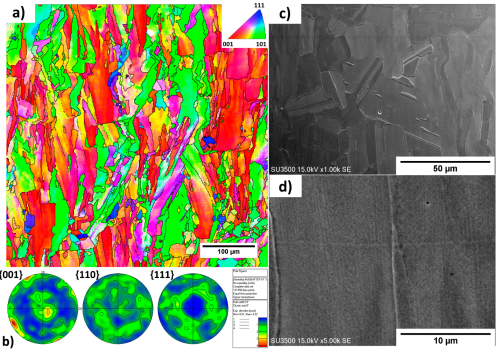We’ve got plenty of business news for you in today’s 3D Printing News Briefs, and a little scientific research as well. Kelyniam Global has acquired new 3D printing technology, while Rostec makes an investment in technology. One of the earliest SpaceX employees is now an advisor for another aerospace company, the Youngstown Business Incubator has received a federal grant, and SAE International recently hosted a 3D printing webinar. Auburn University has been chosen as the site of a new National Center of Additive Manufacturing Excellence, and a new study discusses 4D printed elastic ceramics.
Kelyniam Global Adds New 3D Printing Capabilities
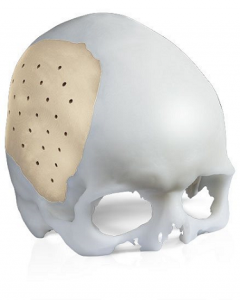 Using medical models for surgical pre-planning is almost a clinical standard these days. In an effort to increase its current medical modeling skills, custom 3D printed cranial implant manufacturer Kelyniam Global, which works with health systems and surgeons to improve cost-of-care and clinical outcomes, announced that it has expanded its 3D printing capabilities with the acquisition of new technology. This new technology aligns with the company’s reputation as a premium supplier of cranial implants requiring excellence in design and quick turnaround times.
Using medical models for surgical pre-planning is almost a clinical standard these days. In an effort to increase its current medical modeling skills, custom 3D printed cranial implant manufacturer Kelyniam Global, which works with health systems and surgeons to improve cost-of-care and clinical outcomes, announced that it has expanded its 3D printing capabilities with the acquisition of new technology. This new technology aligns with the company’s reputation as a premium supplier of cranial implants requiring excellence in design and quick turnaround times.
“This state-of-the-art equipment will enable Kelyniam to produce certain medical models on the same 24-hour turnaround schedule we offer for cranial implants. The ability to rapidly print ultrahigh resolution models with high accuracy across our entire platform is a significant differentiator in our industry,” said Kelyniam COO Chris Breault.
Rostec Investing in Industrial 3D Printing Development
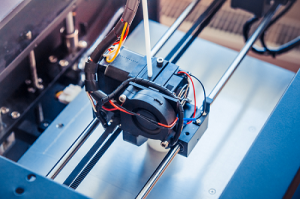 Russia’s state technologies corporation Rostec (also Rostek and Rostekh), which develops products for high-tech and communication systems, has invested nearly 3 billion rubles to create a specialized center for industrial 3D printing. The Center for Additive Technologies (CAC), with a goal of reducing the amount of time and money it takes to launch new products, will offer customers a full range of services and advanced 3D printers. The CAC’s main task will be introducing industrial 3D printing to high-tech industries that could really use it.
Russia’s state technologies corporation Rostec (also Rostek and Rostekh), which develops products for high-tech and communication systems, has invested nearly 3 billion rubles to create a specialized center for industrial 3D printing. The Center for Additive Technologies (CAC), with a goal of reducing the amount of time and money it takes to launch new products, will offer customers a full range of services and advanced 3D printers. The CAC’s main task will be introducing industrial 3D printing to high-tech industries that could really use it.
“Industrial 3D printing is becoming one of the indispensable attributes of modern industry. We see the high potential of this technology and introduce it into our production practice,” said Anatoly Serdyukov, the Industrial Director of the aviation cluster at Rostekh State Corporation. “For example, in the JDC today, about three tons of parts per year are produced by the additive technology method. The holding plans to widely use them in the serial production of promising Russian gas turbine engines, which will be certified in 2025 – 2030. The creation of a specialized center will expand the scope of this technology and produce parts for such industries as aircraft building, space, high technology medicine, automotive industry.”
Project participants calculate that the CAC’s first pilot batch of parts will be manufactured there sometime in 2019.
Former SpaceX Employee Becomes Advisor to Relativity Space
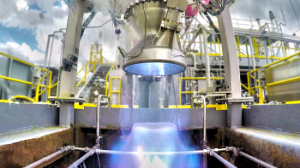 Aerospace company Relativity Space hopes to one day 3D print an entire rocket in an effort to lower the cost of space travel, and has been working hard to achieve this goal over the last few years. The company has fired up its 3D printed engine over 100 times so far, and just a few months ago received $35 million in Series B Funding. Now, Relativity Space has announced that Tim Buzza, one of the very first employees at SpaceX – another company working to 3D print rockets – is one of its official advisors.
Aerospace company Relativity Space hopes to one day 3D print an entire rocket in an effort to lower the cost of space travel, and has been working hard to achieve this goal over the last few years. The company has fired up its 3D printed engine over 100 times so far, and just a few months ago received $35 million in Series B Funding. Now, Relativity Space has announced that Tim Buzza, one of the very first employees at SpaceX – another company working to 3D print rockets – is one of its official advisors.
Jordan Noone, Relativity Space Co-Founder, said “When I was at SpaceX, Tim’s stellar reputation for breadth and depth of engineering and operations was legendary in the industry.”
Buzza spent 12 years helping to develop SpaceX’s Falcon 9 rocket and Dragon spacecraft and will advise Relativity Space on organizing the company structure, launch site selection and trades, rocket architecture, structures and avionics, and more.
Federal Grant Awarded to Youngstown Business Incubator
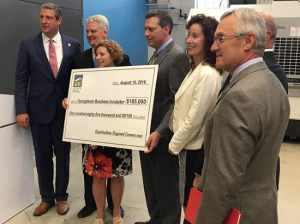 The Youngstown Business Incubator (YBI) is about to receive some new 3D printing software and hardware, thanks to a federal grant. Recently, the Appalachian Regional Commission awarded $185,000 in federal funding to YBI. The new 3D printers and 3D printing software that the grant will fund, in addition to being a boon for YBI, will also help to strengthen its frequent area partners Youngstown State University (YSU) and America Makes.
The Youngstown Business Incubator (YBI) is about to receive some new 3D printing software and hardware, thanks to a federal grant. Recently, the Appalachian Regional Commission awarded $185,000 in federal funding to YBI. The new 3D printers and 3D printing software that the grant will fund, in addition to being a boon for YBI, will also help to strengthen its frequent area partners Youngstown State University (YSU) and America Makes.
“Each additional piece of equipment further strengthen us as a national and international leader in additive manufacturing technology and this is a key part of that process,” said Michael Hripko, YSU’s Associative Vice President for Research.
SAE International Recently Held Additive Manufacturing Webinar
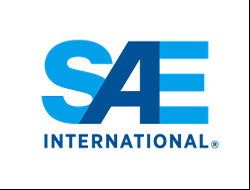 Last week, global engineering organization SAE International hosted an hour-long additive manufacturing webinar, called “Considerations When Integrating Additive Manufacturing into Aerospace and Ground Vehicle Development and Production Environment,” for members of the mobility engineering community. The discussion, moderated by the organization’s Senior Global Product Manager Audra Ziegenfuss, was led by four guest speakers: Dr. John Hart, the Director of MIT’s Center for Additive and Digital Advanced Production Technologies (ADAPT); Bill Harris, a Technical Fellow with Lockheed Martin; and Adam Rivard, the Additive Manufacturing Director for LAI International, Inc.
Last week, global engineering organization SAE International hosted an hour-long additive manufacturing webinar, called “Considerations When Integrating Additive Manufacturing into Aerospace and Ground Vehicle Development and Production Environment,” for members of the mobility engineering community. The discussion, moderated by the organization’s Senior Global Product Manager Audra Ziegenfuss, was led by four guest speakers: Dr. John Hart, the Director of MIT’s Center for Additive and Digital Advanced Production Technologies (ADAPT); Bill Harris, a Technical Fellow with Lockheed Martin; and Adam Rivard, the Additive Manufacturing Director for LAI International, Inc.
Topics covered during SAE International’s webinar last week included novel AM methods that translate to automotive and aerospace applications, the risks involved in introducing 3D printed, flight-critical parts, and the anticipated timeline for general acceptance of 3D printed parts by aerospace customers.
Auburn University Site of New National Center of AM Excellence
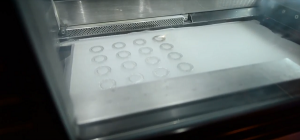 Recently, Auburn University in Alabama, ASTM International, and NASA launched two new centers of excellence in additive manufacturing with the shared goal of speeding up research and development, standardization and innovation in 3D printing. Researchers at Auburn’s National Center for Additive Manufacturing Excellence (NCAME), will conduct interdisciplinary research, while also striving to grow effective collaboration between industry, government, academia, and not-for-profit.
Recently, Auburn University in Alabama, ASTM International, and NASA launched two new centers of excellence in additive manufacturing with the shared goal of speeding up research and development, standardization and innovation in 3D printing. Researchers at Auburn’s National Center for Additive Manufacturing Excellence (NCAME), will conduct interdisciplinary research, while also striving to grow effective collaboration between industry, government, academia, and not-for-profit.
“The Center of Excellence is going to facilitate us bringing together the best technical experts in industry, government, and academia, and that’s going to help us develop the very best standards for this emerging technology,” said Katharine Morgan, the President of ASTM International.
New Study On 4D Printed Elastic Ceramics
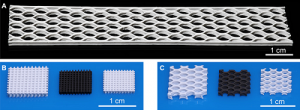
3D printing EDCs. (A) 3D printed large-scale elastomeric honeycomb. (B) 3D printed microlattices and (C) honeycombs of PDMS NCs and first EDCs and second EDCs.
Shape-morphing assembly is a great technology for applications in 4D printing, biomaterials, life sciences, and robotics, and multiple materials like ceramics, silicone, and polymers are used. But, we’ve not yet seen much in the way of ceramic structures derived from soft precursors that allow for elastic deformation. Polymer-derived ceramics (PDCs) have some excellent properties, such as high thermal stability and chemical resistance to oxidation and corrosion, and their microstructures can be fine-tuned through tailored polymer systems.
While we’re seeing a lot in the way of 3D printing soft materials, current ceramic precursors are not flexible and stretchable. Guo Liu, Yan Zhao, Ge Wu, and Jian Lu with the City University of Hong Kong published a paper, titled “Origami and 4D printing of elastomer-derived ceramic structures,” that explains how they developed silicone rubber matrix nanocomposites (NCs) that can be 3D printed and deformed into elastomer structures with complex shapes and transformed into mechanically strong EDCs.
The abstract reads, “Four-dimensional (4D) printing involves conventional 3D printing followed by a shape-morphing step. It enables more complex shapes to be created than is possible with conventional 3D printing. However, 3D-printed ceramic precursors are usually difficult to be deformed, hindering the development of 4D printing for ceramics. To overcome this limitation, we developed elastomeric poly(dimethylsiloxane) matrix nanocomposites (NCs) that can be printed, deformed, and then transformed into silicon oxycarbide matrix NCs, making the growth of complex ceramic origami and 4D-printed ceramic structures possible. In addition, the printed ceramic precursors are soft and can be stretched beyond three times their initial length. Hierarchical elastomer-derived ceramics (EDCs) could be achieved with programmable architectures spanning three orders of magnitude, from 200 μm to 10 cm. A compressive strength of 547 MPa is achieved on the microlattice at 1.6 g cm−3. This work starts a new chapter of printing high-resolution complex and mechanically robust ceramics, and this origami and 4D printing of ceramics is cost-efficient in terms of time due to geometrical flexibility of precursors. With the versatile shape-morphing capability of elastomers, this work on origami and 4D printing of EDCs could lead to structural applications of autonomous morphing structures, aerospace propulsion components, space exploration, electronic devices, and high-temperature microelectromechanical systems.”
Discuss these stories and other 3D printing topics at 3DPrintBoard.com or share your thoughts in the Facebook comments below.


